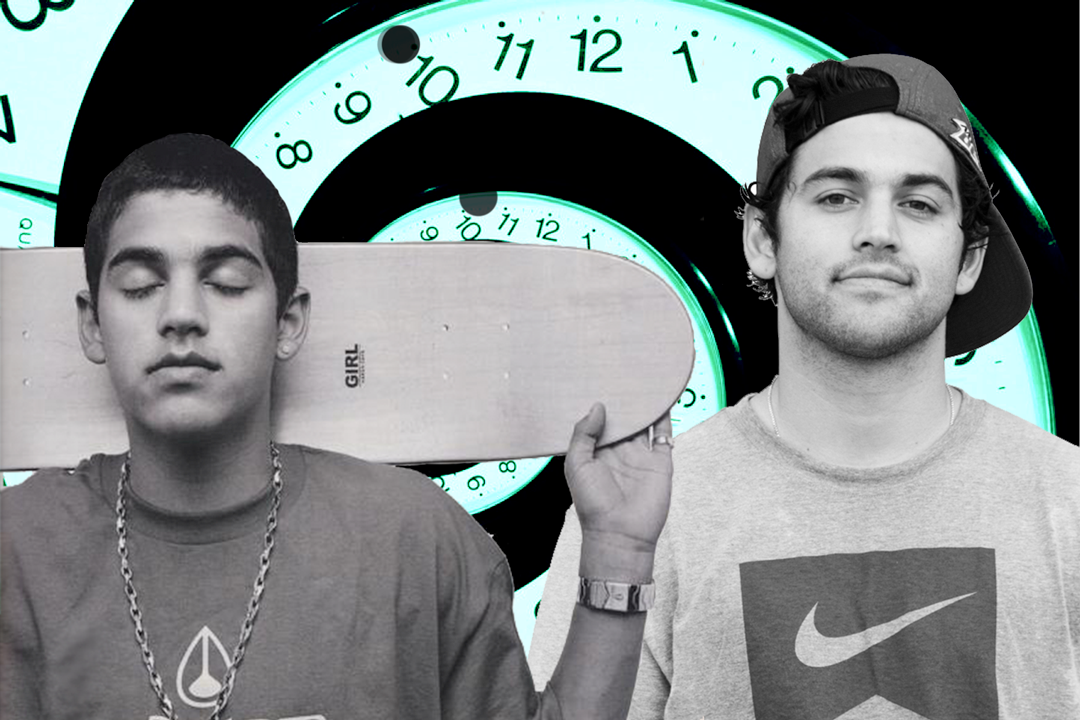
There is a long and complicated history to the culture of skateboarding, and every skateboarder’s understanding of themselves within this culture is relative to the time and place from which they entered it.
Skateboarding is in a strange place right now, or, since it’s always in flux, it’s moving from one strange place to another. There was a time when skateboarding had died, where there was neither money nor notoriety in it, but that history is hard to see these days. Skateboarding’s gone from boyish pastime to billion-dollar industry before our eyes.
To try and make some sense out of this arc, I looked back at the fifteen years I’ve been a skateboarder through the fisheye lens of my love/hate relationship with Paul Rodriguez.
I’d already been riding a skateboard for a few years when Street Cinema came out in 2001, but I was only just beginning to understand what it was to be a skateboarder. My perception of skateboarding was limited to the action itself and some commercial representations of it. Skateboarding was the visceral pain and joy of falling and riding, but it was also the Ninja Turtles, Jackass, the X-Games, and Tony Hawk’s Pro Skater. I was a kid, naive and impressionable. I’d watched Hawk land the first 900 and immediately went outside to practice rolling off the nearest curb; at night I’d get my special meter blinking gold and bust a ghetto bird to grind combo; and when a skate shop finally opened in my town the first video I bought was the City Stars one because the company’s owner was my favorite video game character.
Kneeling before my TV set as it flashed parts from Javier Nunez, Mikey Taylor, and Devine Calloway – people I’d never heard of in video games or contests – I became a pious convert to the church of skateboarding. But when the screen showed a kid named Paul Rodriguez playing in Chuck E Cheese’s and cruising around Cali schoolyards, it was like seeing a slightly older but much cooler version of myself. Strange to say now, but back then I found him relatable. He was a little Latino kid (kind of like me), and because I was so new to skating, the tricks he was doing, while impressive, seemed feasible. I could occasionally kickflip, and once I even front boarded that parking block down the street, so it seemed safe to assume that I’d be skating at least at the level of Roger Mancha in a couple of years. Skateboarding was an open plane of possibility, and Paul Rodriguez was my compass.
”Skateboarding was an open plane of possibility, and Paul Rodriguez was my compass.”
I knew enough then to understand that Paul skating to Jackson 5 era Michael Jackson was significant of something. Parallels between the skater and singer were obvious: two young prodigies making it look way too easy. But I was unaware of the deeper reference that song choice suggested. An older skater would be quick to point out that it was the same song a young Guy Mariano broke out onto the scene with in Video Days nearly a decade earlier. To him, Paul skating to that song was a reminder of the past, of how quickly skating progresses and how quickly skaters disappear. But this history was hidden in the shadows of my naivete, and Paul’s part represented nothing more to me than the future of what skateboarding could be.
By 2010 I’m older, and have developed a more, ahem, refined sense of what skateboarding should be. The realization of my own limited skateboard talents had tinted my perspective. I’d never landed a kickflip into a backtail, so watching skaters do it switch with a big spin out had lost its appeal. Plus, with the whole of skate culture now available to me through the Internet, I was able to ground myself in a history previously unavailable to me as a suburban kid in the South. I was like the Lorax, “they say I’m old fashioned, and live in the past, but sometimes I think progress progresses too fast.” As far as the newer stuff went, it should only range from the artful pretense of Alien Workshop to the light-hearted dismissiveness of Tilt Mode Army. Skateboarding, real skateboarding, was either high art or high fun, anything else was commercial bullshit. And Paul Rodriguez, excuse me, P. Rod, was the embodiment of this commercialization.
”Skateboarding, real skateboarding, was either high art or high fun, anything else was commercial bullshit.”
In the decade since Street Cinema had come out, Paul had made the full blown transition from prodigy to product, becoming the poster boy for a new, sporty and sanitized version of skateboarding, a kind of skateboarding to which I refused to relate. Like old friends from middle school, we never really kept in touch, but I’d see updates on social media and would scoff at what he’d become.
The worst came in 2009 with Street Dreams, a movie starring Rob Dyrdek, Ryan Dunn of Jackass, and, of course, Paul Rodriguez. The movie’s plot revolves around whether or not Paul can land “the NAC,” a 360 flip to crooked grind that’s like the Excalibur of skate tricks, a trick that, if he can pull it off, will guarantee him the girl and the sponsors of his dreams. This formulaic presentation of skate culture was nothing less than embarrassing. It in no way represented skate culture, or at least the skate culture I now chose to acknowledge. It made us look no better than the Disney channel versions of rollerblading and snowboarding, just another x-treme sport to be watered down and marketed for retail.
But I couldn’t write off P.Rod as simply a sell-out just yet. Despite my preference for a less athletic style of skating, I could still recognize the value of progression when I saw it. His 2010 Plan B part, “Me, Myself, and I,” served as a direct address to those like me that hated on him for his Target and AT&T sponsorships. The opening lines of Kanye West’s “Power” make P.Rod’s case just as well as his otherworldly skateboarding: “Living in the 21st Century, doing something mean to it/ Do it better than anyone you ever seen do it/ Screams from the haters got a nice ring to it/ I guess every superhero needs his theme music.”
Fifteen years after being introduced to Paul Rodriguez in Street Cinema, I saw him for the first time in person at a Street League stop in Newark, New Jersey. In the surreal surroundings of a crowd of thousands, I watched my earliest skate idol struggle to keep up in the sport that he’d helped establish. He looked heavy, as if the pressure to stay relevant had hunched his shoulders and hindered his pop. A friend commented that because P.Rod had modeled his career out of progression and athleticism, his old age would be the end of him. I said nothing, but silently lamented seeing a reflection of my own mortality bail flip tricks at the tail end of the spotlight.
It’s hard to reckon with time – it moves so slowly when you’re in it but runs so quickly when you wade out and observe it from a bank. That day that I first watched Street Cinema feels like just yesterday, and already we’re at the twilight of P.Rod’s skateboarding career. Sure, with good strategy and consistency he’s still regularly making it into the finals of Street League, and his collected footage from Mountain Dew’s overblown We Are Blood is damn good, but he’s no longer a standout. The kids that came up watching P.Rod have started to outshine him, just as P.Rod did to his predecessors.
But, after gloomily meditating on the swift current of skateboarding, I’ve realized an error in my thinking. Even if his skate skills are waning, P.Rod’s skateboarding career is long from over because what it means to have a career in skateboarding is so much greater than what it once was. Young Paul learned a valuable lesson from Kareem and Koston, skaters that managed to survive the dead years of the ’90s by carving a place for themselves in the halls of mainstream skate culture: in order to survive, skateboarding must grow.
Through strategic sponsorships (aka “selling-out”), P.Rod has positioned himself to ensure that growth by attracting as many young kids as he can. It’s true that a lot of these kids won’t get past this superficial gloss, that they will be part of an influx of the oft-maligned poser, but some of these kids will be hooked, and they’ll look closer to find the stitches and seams that make skateboarding the rich tapestry it is. They’ll find an archive of P.Rod’s old video parts; they’ll find Kareem, Trilogy, and Gino; they’ll find Mariano, Goldfish, and Sheffey… The wormhole is infinite and winding and can take you places you didn’t even know you wanted to go. It’s that curiosity that separates a skateboarder from just someone who skateboards, and P.Rod is the generous key holder at the gates.
”Skateboarders get old, skateboarding doesn’t.”
There’s a line from the cheesy narration of We Are Blood that hints at Paul’s understanding of skateboarding’s inevitable arc from the shadows to the spotlight. As kids swarm him for autographs, he says: “Skateboarding started out as something so simple. But look at it now and it’s grown into something massive. A movement. Today there are tens of millions of skateboarders all over the world. It’s everywhere you look. And it’s only going to get bigger and more popular. That’s just where skateboarding’s going.” P.Rod seems to have known this from the start, and directed himself, for better or worse, in a way that would make the most out of this momentum. He understands what a lot of us refuse to admit: skateboarders get old, skateboarding doesn’t.
Related Posts
Comments
Popular
-
 RECONTEXTUALIZING ZAK ANDERS, ONE OF TODAY’S MOST MYSTIFYING SKATERS
RECONTEXTUALIZING ZAK ANDERS, ONE OF TODAY’S MOST MYSTIFYING SKATERS
"I don’t want to be this brutal punk that hates everything that people like, and I’m trying really hard to undo that."
-
 RARELY SEEN PHOTOS FROM READ AND DESTROY, THE BELOVED BRITISH SKATE MAG
RARELY SEEN PHOTOS FROM READ AND DESTROY, THE BELOVED BRITISH SKATE MAG
Check out early documentation of London's Southbank, vert ramps tucked into Lord of the Rings-level forests, and everything in between.
-
 NAVIGATING SKATING’S HIGHS AND LOWS WITH MATT MILITANO
NAVIGATING SKATING’S HIGHS AND LOWS WITH MATT MILITANO
Over coffee and cigarettes Matt talks prank shows, ABDs and his love for the VX.
-
 A CHAT WITH LUDVIG HAKANSSON, THE OLDEST SOUL IN SKATEBOARDING
A CHAT WITH LUDVIG HAKANSSON, THE OLDEST SOUL IN SKATEBOARDING
The man loves to read Nietzche, skates in some expensive vintage gear, and paints in his own neoclassical-meets-abstract-expressionist style.
-
 MEET THE SEATTLE ARTIST WHO DESIGNED A BACON ’N EGGS INSPIRED SKATEPARK
MEET THE SEATTLE ARTIST WHO DESIGNED A BACON ’N EGGS INSPIRED SKATEPARK
Breakfast-obsessed skaters rejoice!

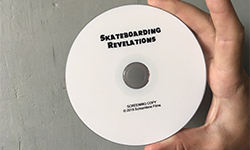


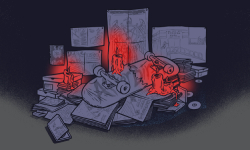
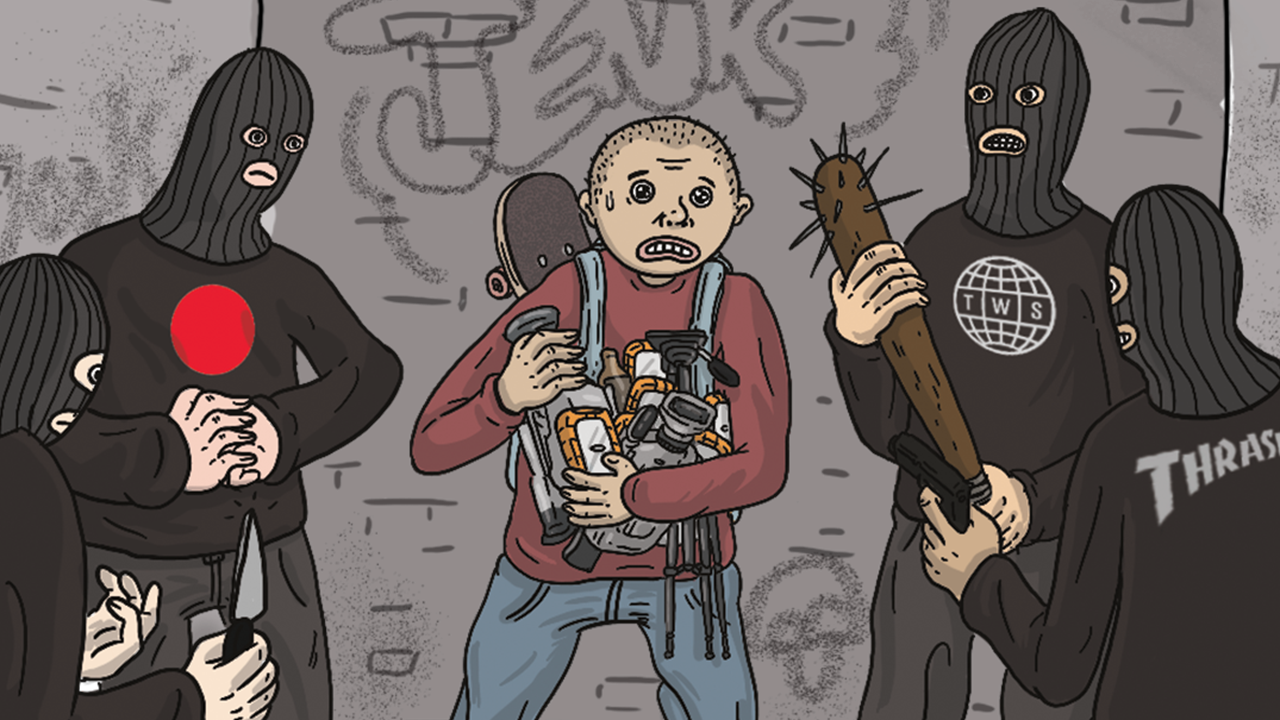

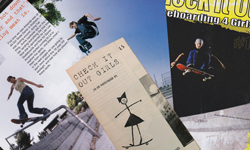
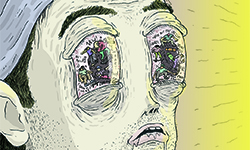
October 5, 2015 1:02 pm
pee-rod
October 5, 2015 1:08 pm
Where’s the good p-or?
October 5, 2015 1:12 pm
Cute article. However, there is SO much more that goes into it than what you see on the surface. Understand how the industry really works before you make comments about the direction a skateboarder takes in their career.
This game will chew you up and spit you back out, flat broke with no love.
Paul is a survivor in an era of such change.
You know how hard skating is. How hard do you think it is to be on top for so long with so much pressure and expectation? Ppl are out here talking shit, while paul has stayed on his grind, killing it the whole time.
Have some respect for the guy. “Hunched shoulders.. hindered pop” lol He should “pop” you in the jaw. He’s like 31? Jesus
October 5, 2015 2:00 pm
The writer is writing as a fan – not an industry big wig.
October 5, 2015 2:05 pm
Look, if the above article or comments hurt Paulito’s feelings, he can console himself with his copious amount of money and “success”. So don’t lose sleep over this, its going to be alright kid.
October 22, 2015 3:08 pm
Either you didn’t read the whole thing or you just missed the point.
October 5, 2015 1:46 pm
No one talks enough about the fact that P-Rod, Gallant, and Ladd were plucked from their board sponsors to ride for Plan B in the prime of their careers, only then to start filming for a video that never came out. There is a wealth of footage and opportunities that we never saw because for whatever reason Plan B didn’t release a video for 9 years. That is insane. It’s also a shame because if you look at the footage output prior to those three guys joining Plan B, they were killing it, constantly putting out new and groundbreaking footage.
Part of what defines this concept of a “sellout” skater is how much they focus on video parts compared to contests. Rodriguez, and the rest of the Plan B team, never were able to show to the world that they were still skating the streets because they never put out a video or videos showing it. In his 8 years with the company, P-Rod put out two full parts, Me, Myself and I, and Nothing But The Truth. He had that shared part in A Time To Shine, and that’s it. Promos and tours videos don’t really count.
Obviously you can’t change the past, and what has happened happened, but still, it is a shame. It’s almost like they went into a time machine and toiled, obviously not financially, for a decade and then spat out. Everyone was looking for a PJ part in True, but the real question is where was the PJ part over the last 9 years? I think it did a real damage to all of those skaters’ image in terms of the “core” fans and their respect for them.
October 5, 2015 3:07 pm
Very True. Great observation
October 5, 2015 4:03 pm
Holy shit, such a good point. Your point is great but also made me furious that I’m probably missing out on some of the best PJ Ladd footage ever. Suddenly…completely hate…Plan B.
October 5, 2015 5:05 pm
what?!!***’¿?=)(/&%$·! … this dude cant make a diference between “ABC” and “I want you back” and you guys keep theorizing about shit?
October 5, 2015 5:39 pm
thanks,buddy!
October 6, 2015 9:13 am
what Mark said is spot on, give me a break